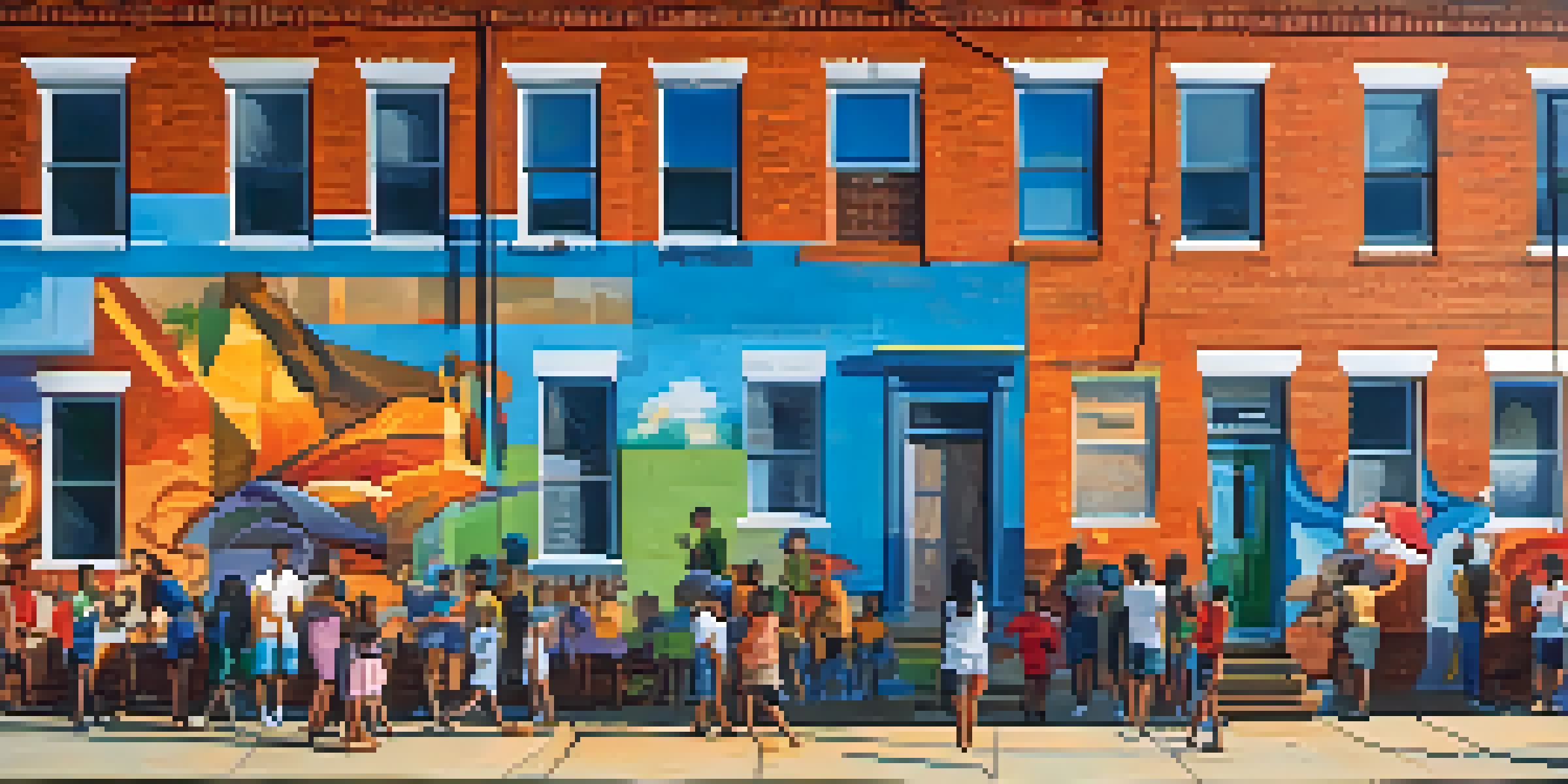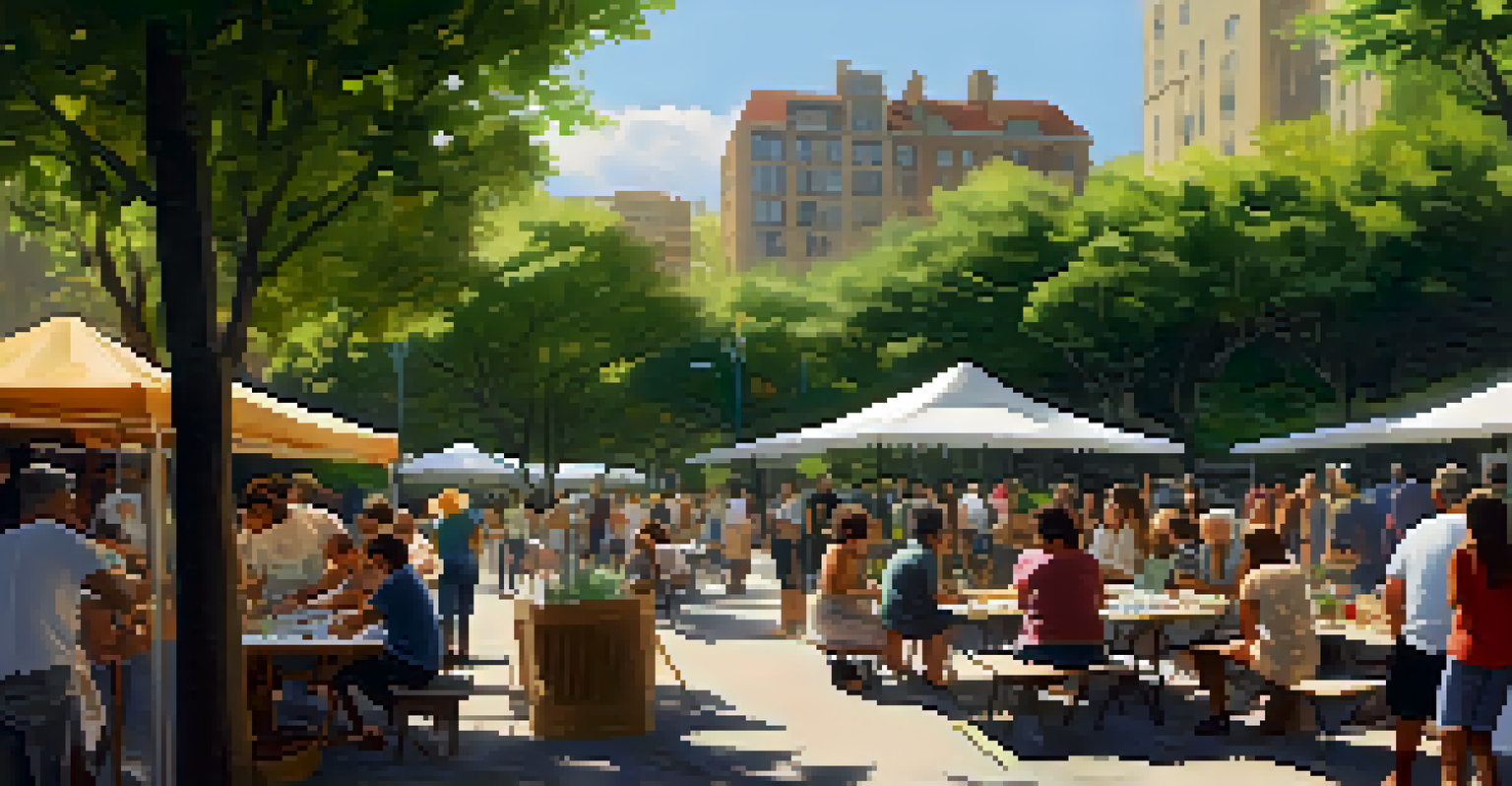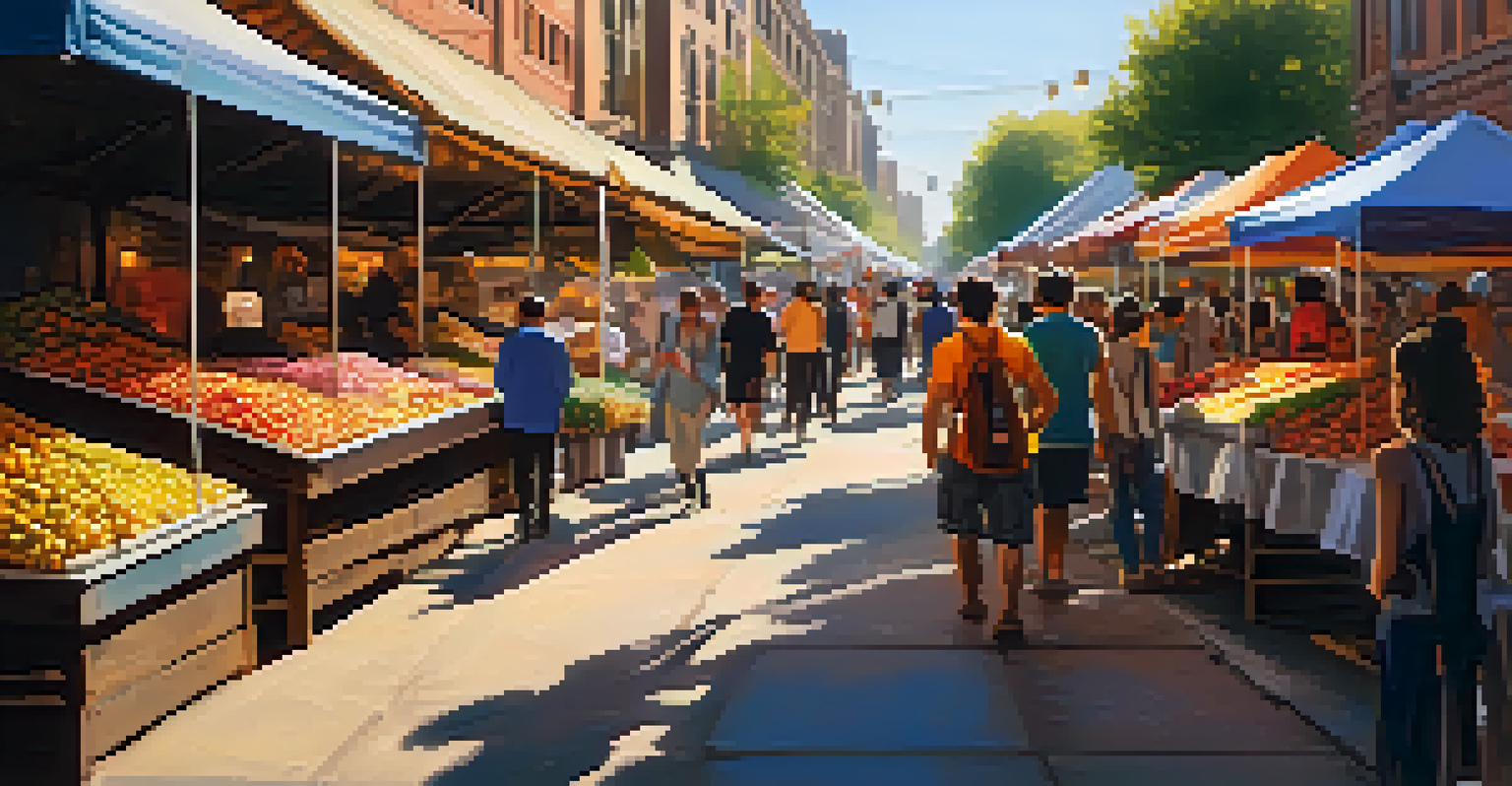The Role of Art in Reviving Declining Urban Communities

Understanding the Decline of Urban Communities
Urban communities often face decline due to various factors like economic downturns, population shifts, and decreased investment. These issues can lead to vacant buildings, reduced public services, and a general sense of hopelessness among residents. Understanding these challenges is crucial for finding effective solutions that can breathe new life into these areas.
Art is not what you see, but what you make others see.
As businesses close and families relocate, the vibrancy that once characterized these neighborhoods fades away. This decline can create a cycle where the lack of resources leads to further deterioration, making it challenging for residents to envision a brighter future. By identifying the root causes of decline, communities can better strategize on how to combat these issues.
However, it's not just about recognizing the problems; it's about igniting a spark of hope and creativity. Many communities are turning to art as a powerful tool to address these challenges, offering a pathway to rejuvenation and renewal.
The Transformative Power of Art
Art has a unique ability to transform spaces and perceptions. A simple mural on a once-dilapidated wall can shift the atmosphere, making a neighborhood feel more welcoming and vibrant. This transformation often encourages community engagement and pride, fostering a sense of belonging among residents.

Moreover, art can serve as a catalyst for discussion and reflection. Through various forms of artistic expression, communities can address social issues and share their stories, creating a narrative that resonates with both locals and visitors. This dialogue is essential in rebuilding trust and solidarity in neighborhoods facing decline.
Art Revitalizes Urban Communities
Art serves as a powerful tool to rejuvenate declining neighborhoods by fostering community pride and engagement.
When communities embrace art, they not only beautify their surroundings but also create opportunities for collaboration and innovation. Local artists, businesses, and residents can come together, forming partnerships that uplift the community, thereby fostering a stronger sense of identity and purpose.
Community Engagement and Participation
For art to effectively revive urban communities, active participation from residents is crucial. Engaging community members in the creative process ensures that the art reflects their experiences and aspirations. This sense of ownership can lead to more meaningful and impactful projects.
Creativity is intelligence having fun.
Workshops, public forums, and collaborative art projects can encourage residents to contribute their ideas and talents. When individuals feel heard and valued, they are more likely to invest their time and effort into their community's revitalization. This participation also builds relationships, fostering a supportive network among residents.
Additionally, involving local artists in these initiatives helps to spotlight talent within the community. It creates a platform for artists to showcase their work while simultaneously contributing to the neighborhood's cultural landscape, enriching it in the process.
Art as an Economic Driver
Reviving urban areas through art can also have a significant economic impact. Art installations, galleries, and cultural events attract visitors, generating foot traffic and boosting local businesses. This influx of visitors can revitalize the economy, creating jobs and encouraging new enterprises to take root.
Furthermore, arts-related economic development often includes the establishment of creative spaces, such as studios and performance venues. These spaces not only provide a platform for artists but also serve as community hubs, bringing people together and fostering collaboration. As a result, the community becomes a vibrant center for creativity and commerce.
Economic Boost from Art Initiatives
Art installations and cultural events can attract visitors, stimulate local businesses, and drive economic growth in urban areas.
Investing in art and culture can also attract outside funding and grants, providing much-needed resources for further development. By highlighting the economic benefits of art, communities can gain support from local governments and organizations eager to contribute to positive change.
Case Studies of Successful Revivals
Many urban communities worldwide have successfully utilized art to spark renewal. For instance, the Wynwood Walls in Miami transformed a once-neglected neighborhood into a thriving arts district, attracting tourists and boosting local businesses. This initiative showcased the power of murals and street art in revitalizing urban spaces.
Similarly, the High Line in New York City is a prime example of how repurposing an abandoned structure into an elevated park created a vibrant cultural hub. This innovative project integrated art into the landscape, encouraging community interaction and engagement, while also driving economic growth in the surrounding areas.
These case studies illustrate that with creativity and collaboration, art can play an instrumental role in reversing urban decline. They serve as inspiration for other communities looking to harness the transformative power of art to rejuvenate their own neighborhoods.
Challenges in Implementing Art Initiatives
While the benefits of using art to revitalize urban communities are clear, there are challenges to consider. Securing funding for art projects can be difficult, as resources are often limited in struggling neighborhoods. Communities may need to be resourceful, seeking grants, sponsorships, or partnering with organizations to bring their vision to life.
Additionally, navigating the diverse perspectives within a community can present hurdles. Not everyone may agree on which art forms to pursue or how to represent their shared history. It’s essential to foster open dialogue and encourage compromise to ensure that all voices are heard and respected.
Community Participation is Key
Active involvement of residents in art projects ensures the initiatives reflect their experiences and aspirations, leading to more significant impact.
Lastly, sustainability is another critical factor. Ensuring that art projects have lasting impact requires ongoing support and engagement from the community. Without continued involvement and investment, even the most beautiful art initiatives can fade away, leaving little trace of the revitalization efforts.
The Future of Art in Urban Revitalization
As urban areas continue to evolve, the role of art in revitalization will likely grow even more significant. With advancements in technology, digital art and multimedia installations are becoming increasingly popular, offering new avenues for creative expression. These innovations can engage younger audiences and attract diverse demographics to participate in community initiatives.
Furthermore, as communities recognize the importance of art in fostering social cohesion, there may be a shift toward integrating art more deeply into urban planning. This holistic approach can ensure that art is not just an afterthought but a fundamental element of community development.

Ultimately, the future of art in urban revitalization looks promising. By embracing creativity and collaboration, communities can continue to thrive, transforming challenges into opportunities for growth and connection.